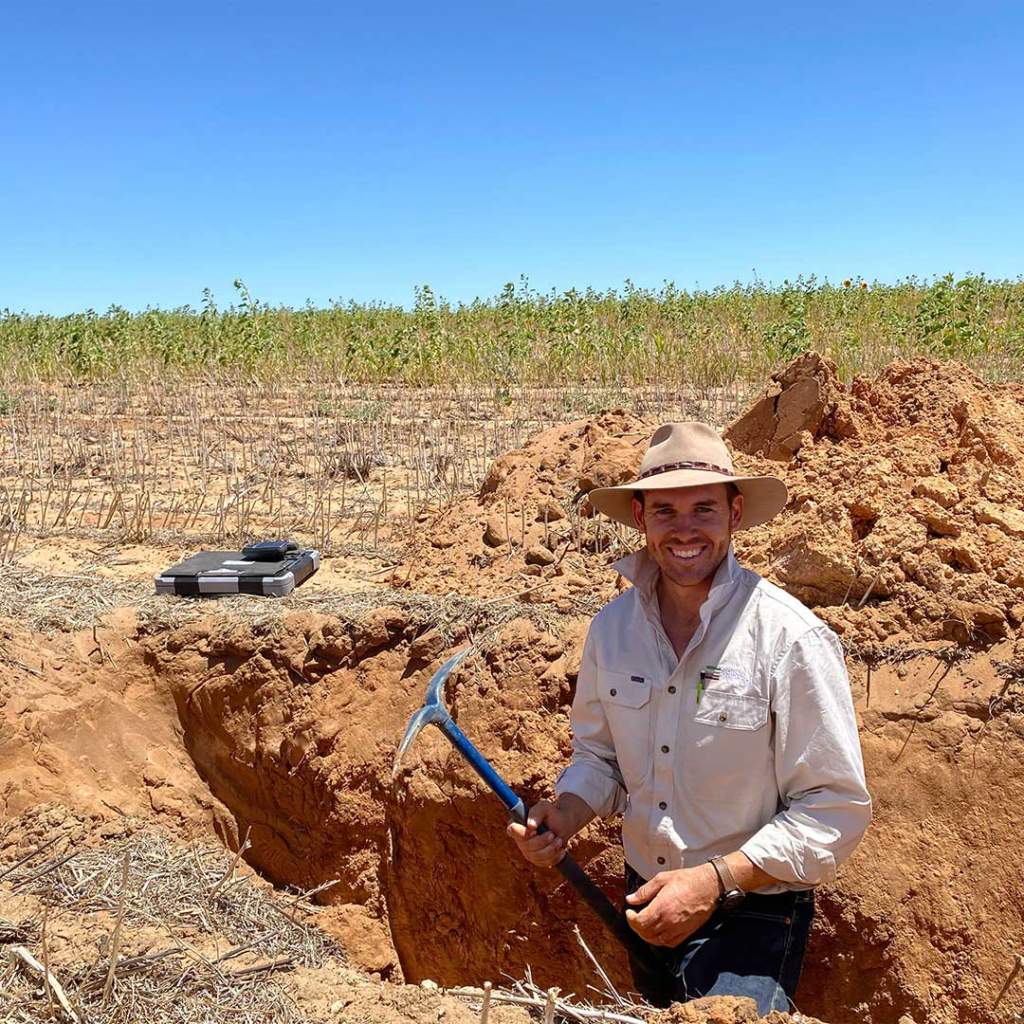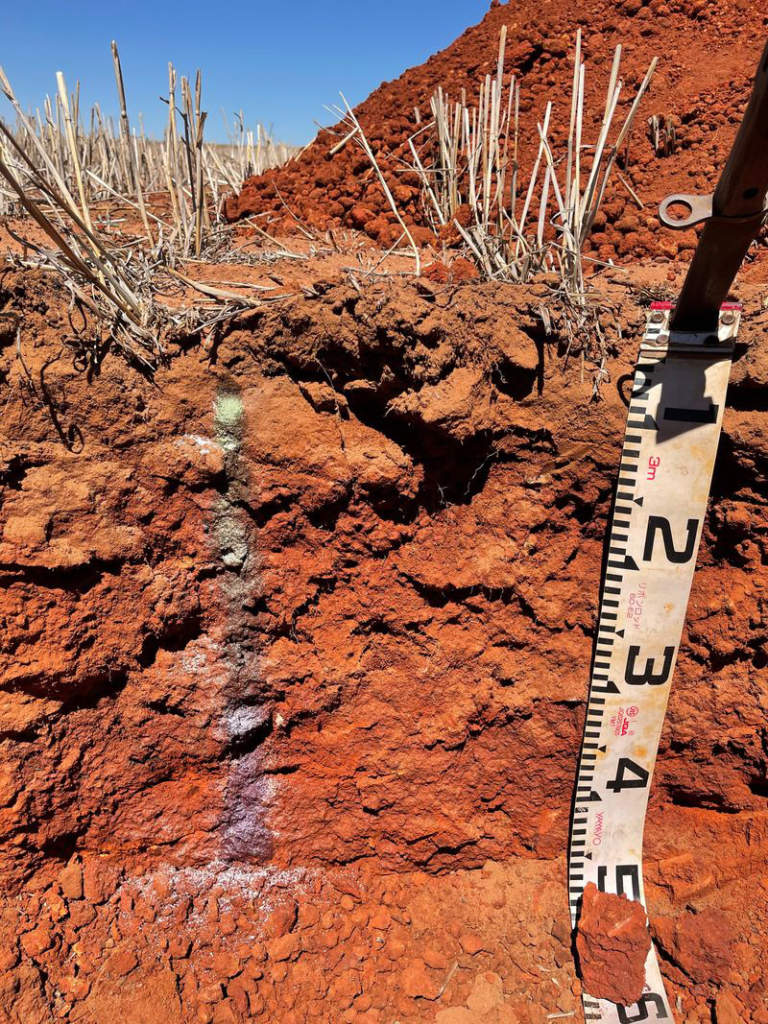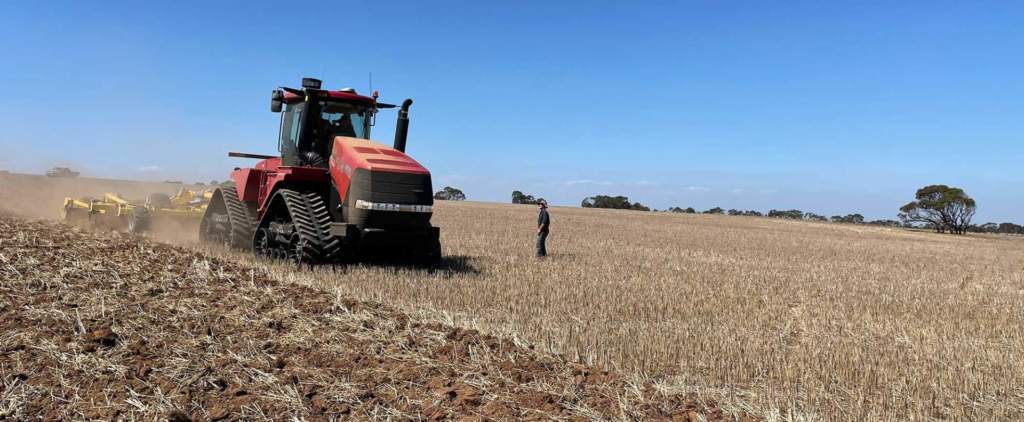Navigating the complex world of agricultural technology with you.
When it comes to maximising yields, you may be sitting on a gold mine. Technological advancements have expanded what’s achievable, and we proudly partner with leading brands and specialists to empower you with the knowledge and tools to enhance your performance and achieve better results.
Ramsey Bros’ Technology Team specialises in integrating the latest advancements in ag technology into your farm operations — including hardware, software, guidance systems and data management. “Generally, most farmers can collect data in their headers, no matter what colour their machine is. With today’s varying prices and seasons, learning how to use this data is a smart first step into precision farming,” Integrated Technologies Consultant Clint ‘Pickles’ Powell says.
With a wide range of products and technical expertise, we work closely with our farmers to find the tailored solutions specific to your farm — but we’re not an island. We collaborate with specialist consultants to help equip you to up your game.
“Farmers have access to numerous data layers for making improvements, and it’s important to organise and refine your data to create useful maps that support better decision-making. We’ve got an increasing population worldwide — we’re trying to produce more food off the same amount of land — so adopting this technology is certainly worth considering,” Clint says.
Partnering with the pros
One of our trusted independent consultants is Ed Scott, a Soil Scientist from Soil & Land Company. Known as “the Soil Sniffer,” Ed has shifted his focus to South Australia after working across the country.
One of his main projects involves the Crop Scan Grain Analyser, available from Ramsey Bros.
“The regions Ramsey Bros covers are varied, spanning from sandy to heavy clay soil. Additionally, larger fields are commonly managed uniformly, but it’s important to recognise the differences within each field,” Ed explains.
“We work closely with farmers to understand why certain areas of their field might perform differently and then help create a pathway to adopt variable rate technologies within the defined zones of their soil types and field production to improve yields and profitability.”
Ed and the Ramsey Bros Integrated Technologies team work together to help farmers to adopt the right tools in large and small scale broadacre, viticulture and pasture management. “Technology plays a crucial role, from sensing technologies to farm machinery, but it’s not always about adding more inputs; it’s about finding better ways to do things in specific areas of the field,” Ed says.

“We recently did an Electromagnetic Survey (EM) map for a Ramsey Bros customer, and Pickles came out to ground-truth it with us. When everyone’s on the same page, we can ask questions and ensure we’re getting the right outcome for the grower.
“Harvest marks the start of Precision Ag season, when farmers gather valuable data like yield and grain quality (protein and oil). Analysing this data reveals insights and opportunities, and identifying variability allows us to work with the grower to understand why it occurs and develop a plan. We start with yield and protein data, then explore in-crop sensing options,” Ed explains.
Cut through the noise
“Generally speaking, a lot of growers we meet won’t necessarily know how much data they’re sitting on or what to do with it. That’s where we can step in, help them understand it and simplify it so it’s usable. We’ll work with someone like Pickles to see what you’ve already got, and together we can complement that with other technologies if needed.
“The other part to weigh up is once we have all the data, is there the capacity to do something with it? Ramsey Bros’ suite of products has something for everyone — and we’ll work with their team to get you the right equipment with the data behind it to get a solid return on investment.”
Where to start
In any farming region, there have been significant advancements, as Ed explains. “We’ve worked closely with farmers to adopt no- till methods, utilising tools like the DBS seeder, which is especially beneficial for specific soil types. Typically, efforts have centred on variable rate lime application for pH management, and gypsum to address problematic soils. Now, the focus is shifting towards nutrition management.
“A lot of growers might be on their second or third piece of machinery that’s got capability to apply variable rate applications — but many are still doing blanket rate applications because of the complexity that comes with the data management piece, it’s easier to put out a flat rate and not get bogged down in it. We’re helping farmers to understand that it doesn’t have to be so complex. By using the right information, we make the process simpler and help them adopt variable rate applications more easily.
“But without establishing a good ‘digital farm’, the whole system can break down. It should be an accurate representation of your Grower, Farm, Field and Boundaries all stored together. Quite often, a farmer may have maps stored in AgWorld or Google Earth that are ‘free drawn’, which is a good start, but it’s essential to have a dependable set of farm maps stored centrally, such as in AFS Connect, to instill confidence in driving machinery and using VR applications effectively.
Whether you’re in broadacre or horticulture, a digital farm is the first place to start — getting it right makes it easy for the rest to fall into place.”

Proof is in the pudding
Ed recently teamed up with Pickles to help a Ramsey Bros farmer on the Eyre Peninsula. “We did an EM38 map to identify opportunities that were perfect for deep ripping with a Bednar and others that needed the DBS to go a bit deeper. At the start of the day, we had a whole heap of zones in the field, but we were able to distil it down to just three main management zones in that field and match the variable field data with the variable rate and type of machinery application. The results we’ve had on this particular farm have been incredible,” Ed says.
When weighing up the risks, Ed is upfront about the importance of getting it right. “It can be disproportionately good when you get it right — say, a tonne-plus per hectare yield response when management such as deep ripping is right. You could just as easily get a tonne yield penalty if you do it in the wrong spot.”
Weighing it up
When it comes to taking this risk, Ed has some sound advice. “How you go about integrating technology into your farming depends on how confident you are in your existing knowledge. If I was going to buy a new farm tomorrow, the first thing I’d do is get an EM38 map, which puts about 10 years’ worth of information overnight into a map.
“Experienced farmers often know their land well, so when they see an EM map, it might confirm what they already know. However, their knowledge is often not stored digitally. Our aim is to help them create a digital version of their farm and fill it with data, ensuring it accurately represents what they know and manage on their farm.
“We start by identifying the main problem, often separating what growers want to do from what their farm needs. By analysing data layers, such as soil tests for issues like acidic pH, we can tailor interventions, like applying lime, to specific areas rather than treating the whole farm uniformly.
“The level of intervention depends on factors like equipment used and desired changes. Having confidence in the data is crucial, but getting the nutrition element right can be challenging, especially when managing nutrients like phosphorus and nitrogen (which is dynamic).
That’s where tools like CropScan to measure the protein data really helps ensure accuracy and confidence in your management changes.
“If you’re about to update something in your fleet, it’s definitely worth a call to have a chat.”






